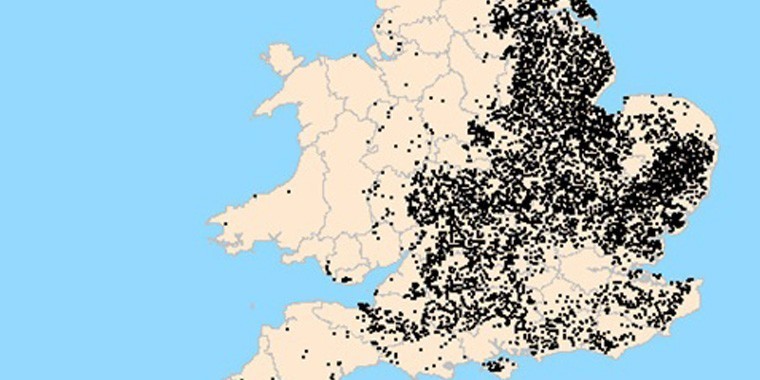As combines roll across the country, it’s worth paying attention to the black-grass population map released by the National Farm Research Unit; it’s turned a few heads.
The map, showing population levels by postcode, identifies a clear route travelling north via the A1 from the Midlands into Scotland, suggesting the problem weed is hitchhiking up motorways into new territories.
“The map shows the need for machinery operators to pay special attention when moving from field to field,” says Charlie Baker, Chairman of the National Association of Agricultural Contractors (NAAC) Agricultural Operations section, “especially when moving from farms with known black-grass problems to unaffected fields.”
He says members of the NAAC abide by a shared understanding and acknowledgement of the ‘golden rule’, as set out in the NAAC Assured-Land based Contractor Scheme (ALBC): ‘Persons entering or leaving a premises should ensure their footwear, clothing and machinery are clean when they enter and again when they leave. Contractors should make use of any facilities provided on-farm and must follow up-to-date Defra guidance on bio-security; the contractor must follow the farm’s/customer’s biosecurity policy if it is more stringent than Defra’s biosecurity policy’.
“We must ensure kit is kept in the cleanest possible condition, especially when moving between farms. It’s easier now with modern machines – they’ve been designed to stop the build-up of material and chaff. Although primarily for fire prevention, it has the secondary effect of preventing the spread of unwanted seed.”
But farmers and contractors can do more to prevent seed spread by clearing stone trays and combine headers with air hoses or pressure washers when moving locations.
According to Phillippa Overson, Bayer CropScience, even a few established plants in your gateway can lead to a much bigger problem if left untreated.
“A single black-grass plant is capable of producing up to and beyond 20 tillers, and with each seed-head producing 100 seeds, you could find yourself with a big problem in a short space of time.
“Checking gateways and field entrances at regular intervals when machinery has been into your fields will give you a good indication if black-grass is present and germinating.
“Half an hour or so spent checking gateways in the weeks post-harvest can save a lot of time, effort and money later on in the year when you’re looking at a much greater population and planning a much larger weed control programme. The key indicators when identifying infant black-grass are; smooth fine leaves, a twisted leaf blade with a blunt tip and a purple tinge on the sheath of the plant.
“Give black-grass a yard and it will take a mile, so get on top of it at the earliest opportunity and reap the benefits for many harvests to come.”




